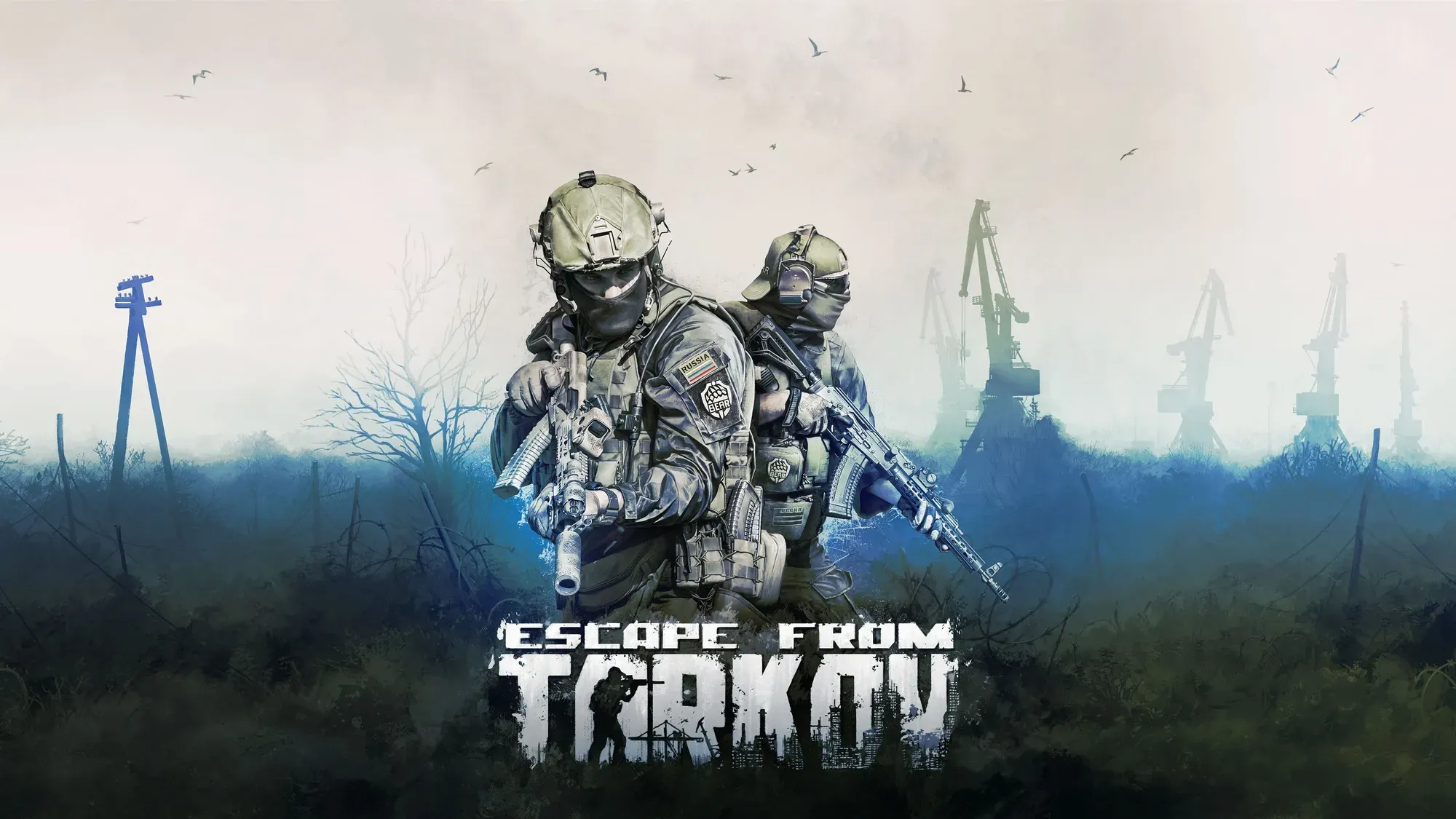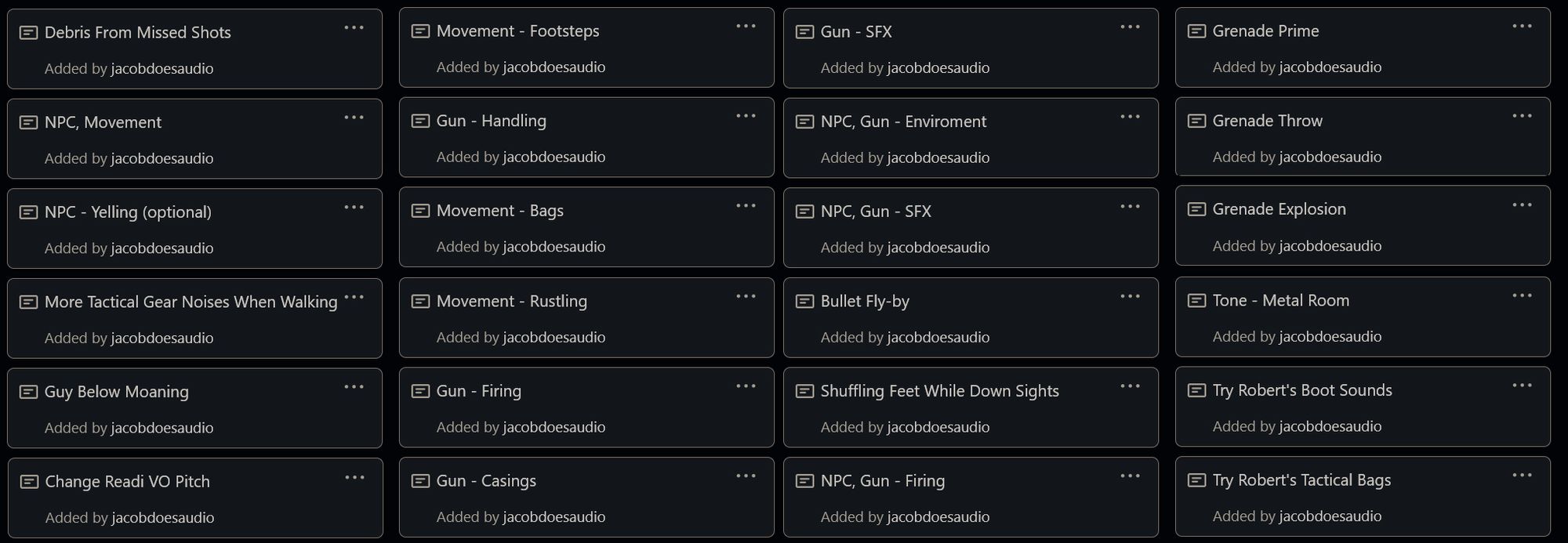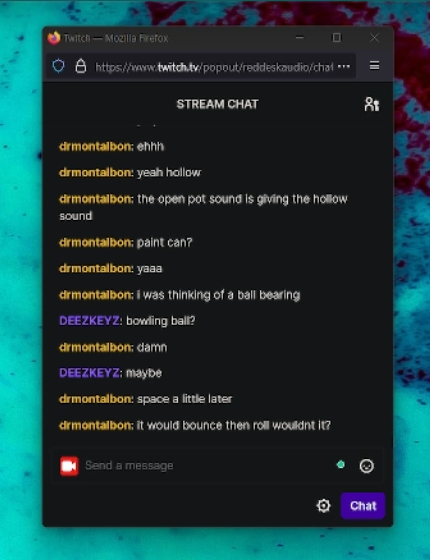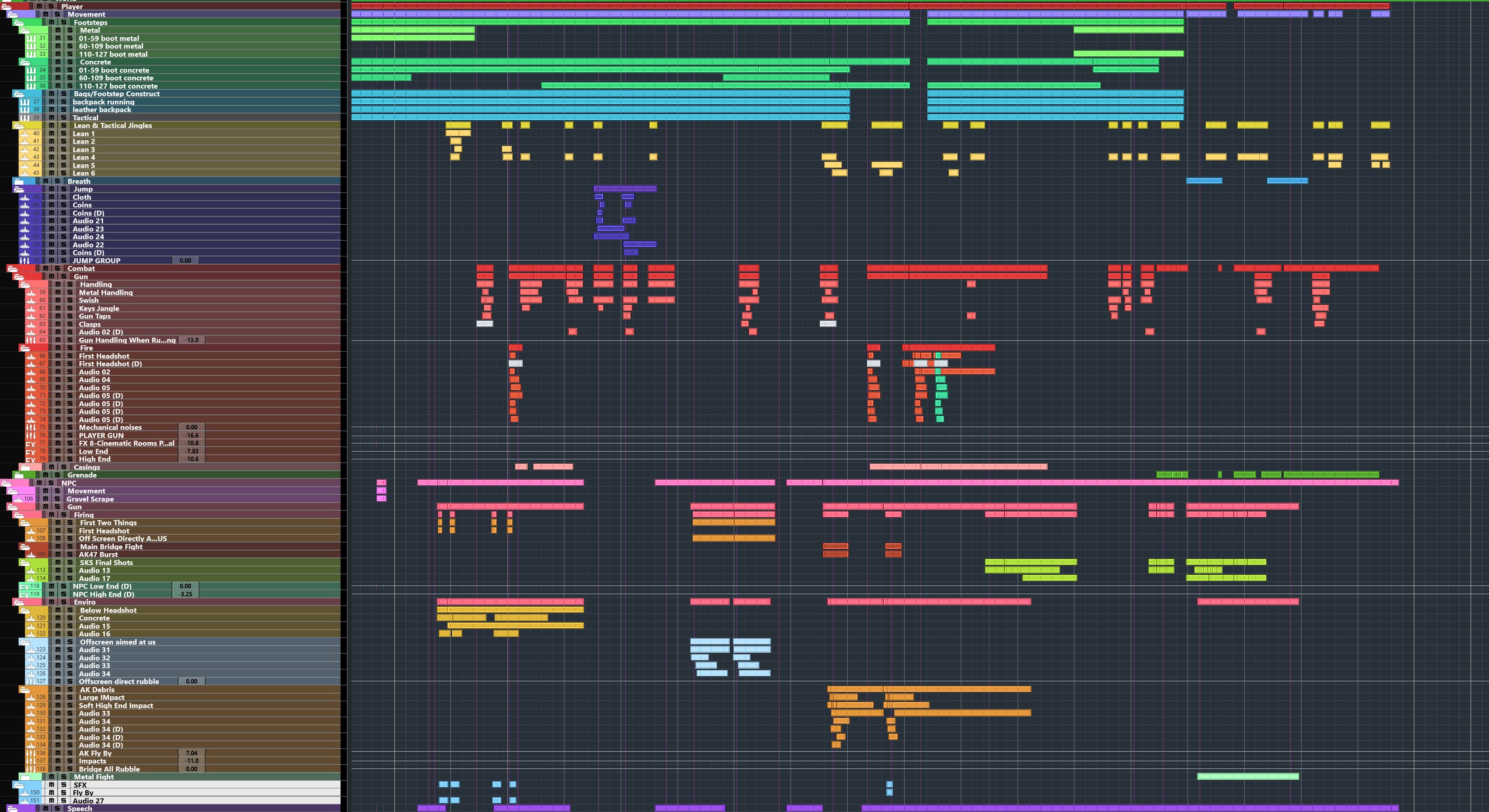Redub: Escape From Tarkov - Realistic Military Simulator FPS

When I first dipped my toes into game audio and immersive audio formats, I was apprehensive about changing focus in my career and fully diving in. The realization which eased my mind was that I have over 11 years of professional audio experience; I’ve made friends with all sorts of musicians and engineers with unique talents and interests. While working with a diverse group, they’ve shared many tricks, workflows, and solutions for a wide variety of problems. The process of creating game assets might be brand new to me, but I’ve done all the required techniques for thousands of hours. Game audio was just a new form to combine those skills in a new exciting way, and it was time to jump into my first project.
Prep
Before getting started, the first thing I did was create a GitHub Kanban board in the hopes it would allow me to chart my progress and visualize my overall workload. To populate the Kanban, I watched the Escape From Tarkov footage I would be working with, which a friend provided, and took notes on every audio element which needed to be replaced and designed. Now that I had a rough idea of what I was re-designing, I imported the footage into Steinberg’s Nuendo (my DAW of choice) and laid out markers for every significant event and story beat. Without a marker track guiding me through the arrangements, I can’t imagine working in Cubase or Nuendo. Now that I had a Kanban populated, Nuendo full of markers, and a blank session in front of me, it was time to move on.

Why did I decide to stream this first project on twitch.tv? I thought it might be savvy to record footage of my struggles and document working through problems which could then be edited and posted on my blog. Yes, I have footage, but something unexpected occurred during my stream. I built a small community where viewers were constantly feeding me new ideas and strangers were filtering in with new perspectives. Most importantly, my chat and I collaborated as a team. The results we produced were more substantial than any of us could do separately.
Process
One trick I picked up from a friend who works at Sony doing foley work is to use samplers (whether it be Native Instrument’s Kontakt or any other drum sampler) to place footsteps. You load a .wav sample library into individual pads (or notes), let’s say “Leather Boots On Concrete Hard Steps.” Place midi notes whenever a footstep occurs on-screen to implement the footsteps. There are a few benefits to using a sampler over raw audio clips. The two most flexible ones are that you can use velocity data to change volume or pitch. The other is if you need to switch sample libraries or layer the raw footstep sounds with cloth sounds or different additional layers, it’s as easy as dragging the midi data to a new sampler track. I designed and placed the footstep sounds during my stream’s first 30 to 40 minutes.
The technical process of editing, working, mixing, and engineering was natural. The most significant hurdle was searching for samples in my libraries. For example, we were trying to figure out how to design the sound of a grenade hitting a corrugated metal corridor floor. Well, of course, the search terms should be metal alongside the words throw or land. No. It sounds completely wrong—small and reminiscent of someone throwing a tin can. The user DeezKeyz was the one who helped solve this problem while we were brainstorming. Grenades are just spheres. Let’s search for bowling balls. Just what we needed. In the end, it sounded like a weighty object that bounced in quickening repetitions.

There were good discussions over the 13 hours of streaming. As a team and twitch chat, we came up with solutions that made their way into the sound design. Which video games have breath effects when you stop running? Ones with a stamina meter will play a breath sound when you are low or have run out of stamina. How do you transform guns from sounding like airsoft weapons into a larger-than-life Hollywood sound? It turns out you can stack a snappy transient, meaty thump, mechanical noises, and an explosion. Since it’s a video game, there are moments of strange movement patterns which wouldn’t occur if it were a live-action film. How do you design audio when an animation abruptly stops or gets cut off by a higher priority interaction? Why should you “rubber duck” to one person after being stumped for half a day when you can stream your consciousness in real-time to a twitch chat? Coming up with solutions and working on theories wouldn’t have been as fun if I had been sitting alone in my studio, thinking in circles.
Workarounds
Here are some of the tricks I came up with to solve gaps in my knowledge.
- To place sounds in a metal corridor, I added comb filters to create a hollow, metal, ringing tone.
- I used two reverbs to make a convincing gun echo in the factory location. One low-end focused reverberation creates the bloom with short decay and low feedback—the second reverb uses diffused feedback to generate a ringing, splashy wall of sound which emulates an empty metal factory.
- Duffle bags, when rustled, make great heavy gear movement sounds.
- The jangling of keys and coins, when pitched down, creates nice textures for footsteps.
- The plugin “DearVR PRO” is excellent for panning and mixing elements. It allows you to place tracks at set distances, panned locations, has effects like occlusion, and even has higher-order ambisonics output.

Results
Thirteen hours of sound design later, with an additional 2 hours of mixing, I could not be more thrilled with how this process unfolded.
Below, you will find the finished stereo mix on YouTube.